Contents
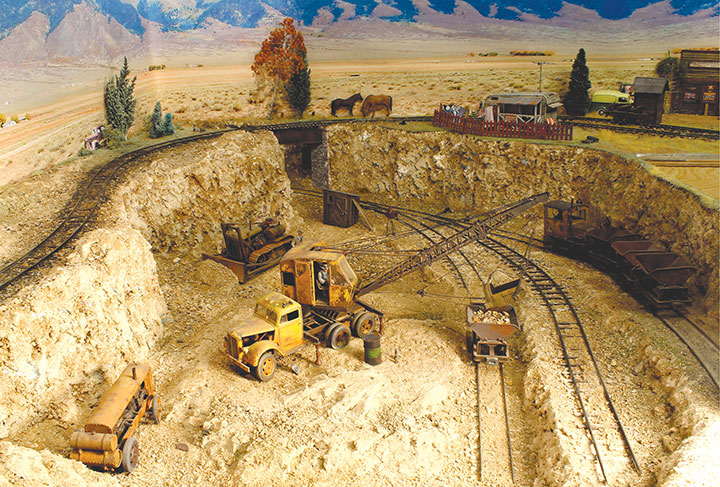
Feature
Pitkin Sand & Gravel
Colorado is perhaps best known for its mountainous terrain. The San Luis Valley in south central Colorado is the setting of my most recent model railroad. This high mountain valley is bounded on the east by the Sangre de Cristo Mountain range and on the west by the San Juan range. The valley floor is relatively flat and sits at an elevation of over 7000 feet. The Rio Grande River flows through the valley. Covering an area of 150 miles in length and about 50 miles wide, the valley boasts some towns with which you may be familiar: Alamosa, Antonito and Creede. But other lesser-known small towns also exist in this area: Monte Vista, Del Norte, Saguache and South Fork.
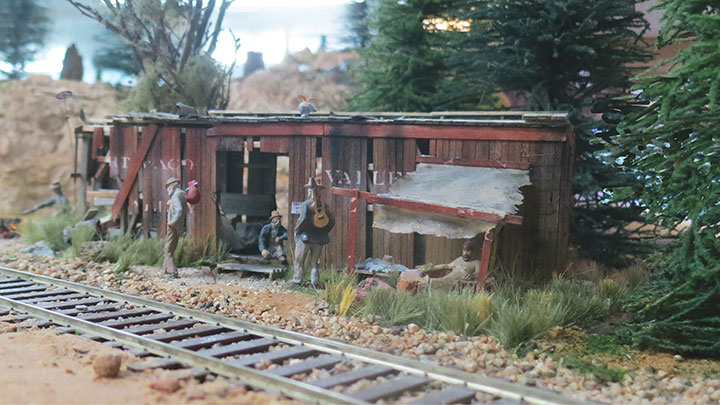
Feature
Hobo Haven
The shelter-in-place was good for something. Lots of work got done in my train room, and I am getting caught up on many overdue items, such as my Hobo Haven. My model was built and taken to the Narrow Gauge Convention in Minneapolis, Minnesota in 2018. There, I promised Bob Brown that I would write something up and here it finally is!
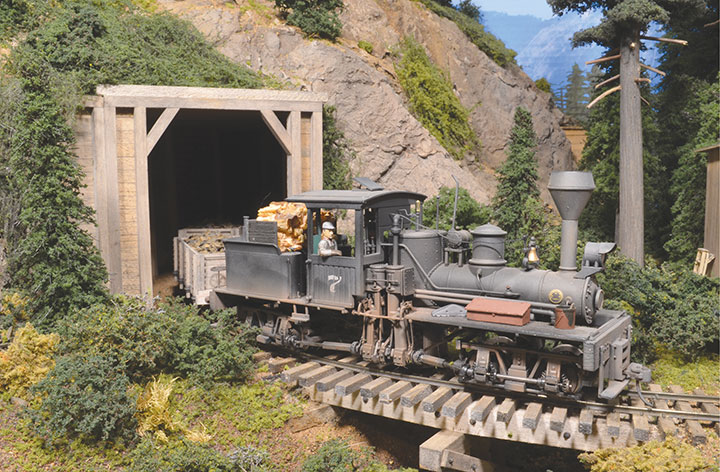
Feature
Wallace Flats
A while back I needed a diversion from my HO scale logging layout (see September/October 2017 GAZETTE), so I decided to try the world of On30. Since there was a need for a small On30 display layout to take to our local train shows, and I wanted to show that you could build a highly detailed layout in a small space, I decided to go ahead with my small layout and name it Wallace Flats after my late father who was a proud supporter of my model railroad endeavors.
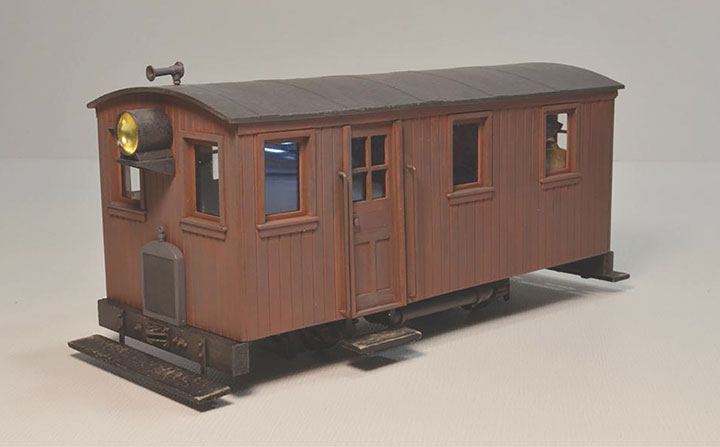
Feature
On30 Crew Speeder For Wallace Flats
I have always wanted to build a logging speeder and built a static model of one several years ago. In my search for a mechanism, I found a HO scale four wheel Athearn EMD Model 40 Diesel locomotive with the dimensions I was looking for. Once I removed the Diesel’s shell, I could see I needed a new floor with a narrower opening for the Diesel’s mechanism. I made a new floor from sheet and strip styrene to fit the mechanism.
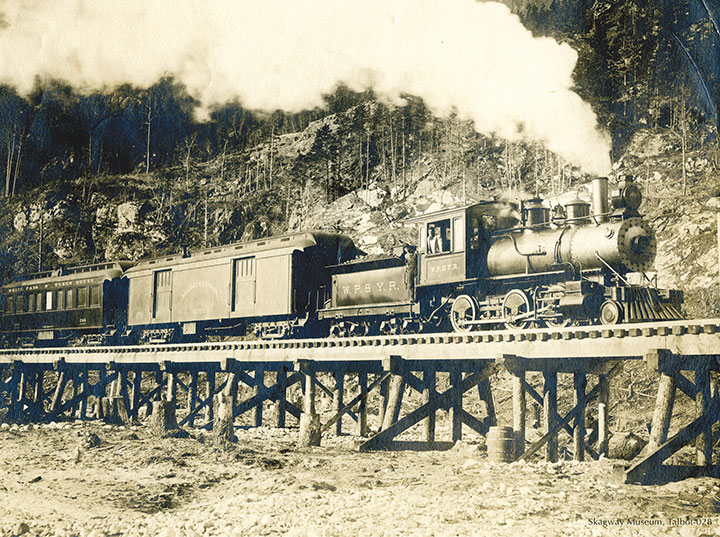
Feature
Locomotives of the White Pass & Yukon Route
The story of the White Pass & Yukon Route (WP&YR) is one of steep grades, incredible scenery, bitter cold, and a stubborn gold miner’s attitude. The rail-way started with the gold lust of the Klondike Gold Rush of the mid-1890s and a need to get people and supplies to the far north. The 110 miles from the Alaskan boom town of Skagway, north to the town of Whitehorse in the Yukon Territory (YT), was completed in two-years, two-months, and two days. This feat was accomplished with British financial backing, Canadian engineering, and mostly American labor. The loco-motives of the White Pass & Yukon Route were an interesting assortment from the beginning. In this series I will explore the early locomotives of this unique and fabled railroad, accompanied by beautiful drawings from long-time GAZETTE con-tributor, David Fletcher. I start with the first locomotives in the Alaska Territory, WP&YR numbers 1 and 2.
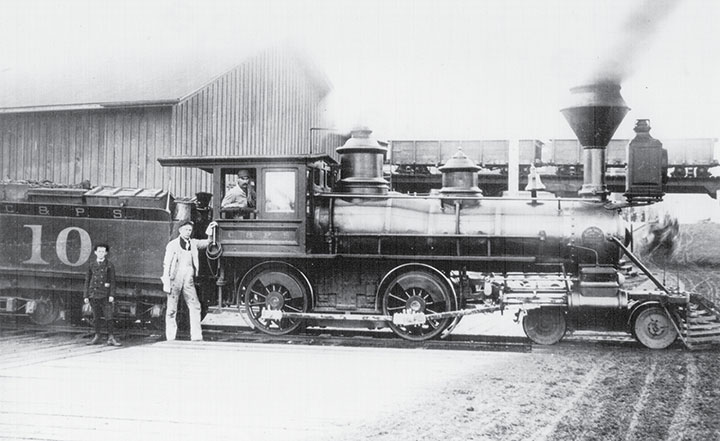
Feature
Olympia and Tenino Railraod / Olympia and Chehalis Valley Railroad
In 1874, the closest mainline railroad to Olympia, Washington, was the Northern Pacific Railroad some 15.5 miles south at a village called Tenino. Because of cheaper construction costs, the incorporators of the railroad decided to build a 3-foot narrow gauge system. Originally constructed to haul coal, the railroad never was extended to the coal mines around Tenino and relied on just hauling logs to be dumped into Puget Sound for revenue. Two round trips a day for hauling passengers between Olympia and Tenino were also made.
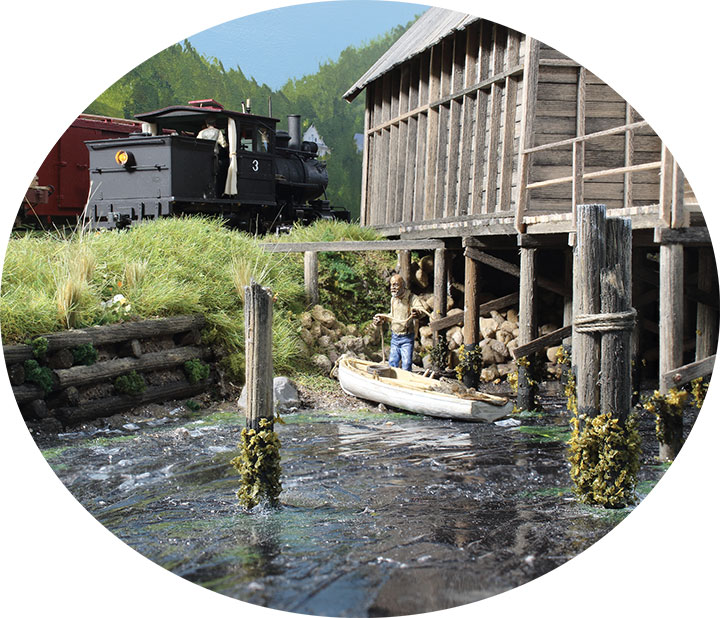
Feature
Adding Life to a Dead Space
I described my On30 Wiscasset, Waterville & Farmington Railway in the November/December 2020 GAZETTE. After 8 years of planning and building my 10- x 12-foot layout, I considered it complete. But we all know a model railroad is never truly finished, is it? My layout included a scratchbuilt 19- x 19-inch wharf used by the railroad to service freight and passengers transloading between ships and the narrow gauge. Two of the three sides included a scratchbuilt schooner and steam ship. But the third side was dead space with very little detail. Worse, it was one of the first things visible when entering the room. Finding ideas to fill this space was at the top of my list when shopping at the many vendor tables during the 2021 National Narrow Gauge Convention in Hickory, North Carolina.
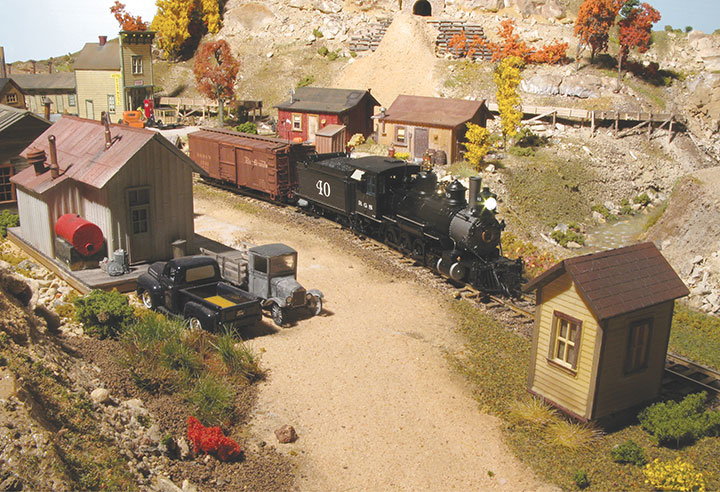
Feature
Layout Refinements: Build Scenes Off-Layout
One of the most striking layout refinements is to add scenery. Many layouts have areas where no scenery has been started. Even if scenery is complete, a longtime hobby can be made out of replacing the proverbial weak link with a new best-effort. One of the biggest stumbling blocks in the way of working on scenery is the mess. Working on scenery entails tools, a variety of glues, and dozens of types of scenic materials. All this can shut down a model railroad for the duration of the project. But wait — scenery doesn’t have to be built on the layout!

Feature
The Romley Turntable on my 0n3 Colorado Central & Southern
Romley, Colorado, was essentially an ore loading facility for the Mary Murphy Mine, located between St. Elmo and Hancock. This was an isolated section of the C&S due to abandonments, and the turntable was used to turn locomotives for the return trip back down to Buena Vista. The turntable was located just off the main line on the edge of a mountain. This was a dangerous location, as engineer Sam Speas found out when the iron center casting on the turntable broke, causing the table to tilt, allowing locomotive #67 to roll off and plunge 30 feet down the mountainside. Luckily, Speas jumped and landed in the pit, suffering only minor bruises.
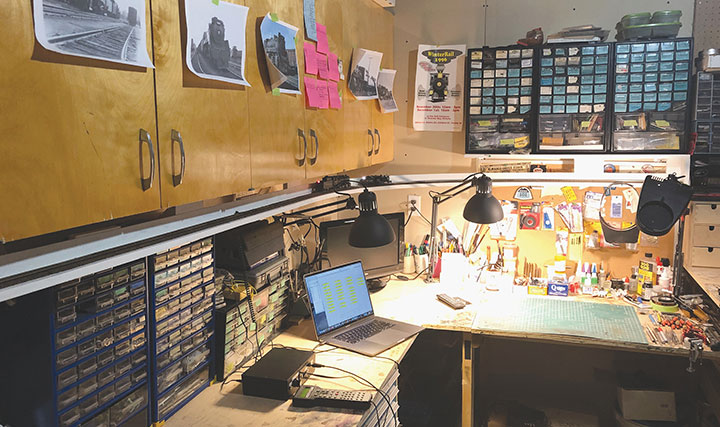
Feature
A Locomotive Test Track Doing It In Style
One of the aspects of this hobby that I really enjoy is the challenge of reworking brass locomotives. However, after rebuilding the drivetrains and adding DCC, I’ve never had a very good way of test running these locomotives. The best I’ve been able to come up with is a jumble of wires and a length of flex track that I temporarily set up on my workbench or coffee table. For the longest time, I’ve wanted to build a proper test track.After years of struggling with this less than adequate setup, I developed a list of criteria that any future test track would need to meet...
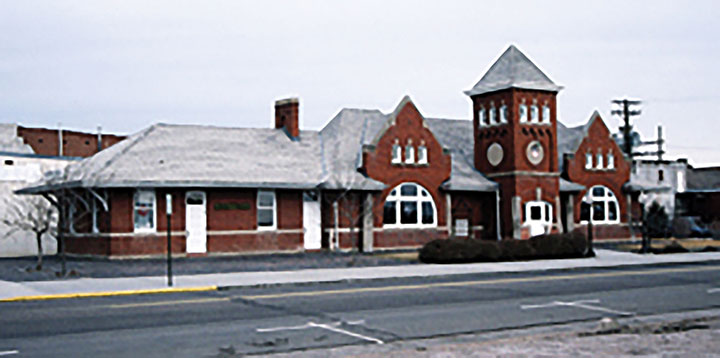
Feature
The Narrow Gauge Scene: Terminal Thoughts
In the January/February 2022 GAZETTE, I discussed the concept of creating a major urban station as the terminal for a free-lance narrow gauge line and interchange point with a standard gauge railroad. I mentioned the possible use of the HO scale Walthers’ Everett Street Station and Train Shed kit to serve that purpose. In this column I will describe the planning and process I used to modify that kit and make it less recognizable as a particular prototype. The techniques described and modifications made need not be copied but can also be applied to other kits. I thank Walthers not only for the kit, but for the photo of the stock model, used here.
